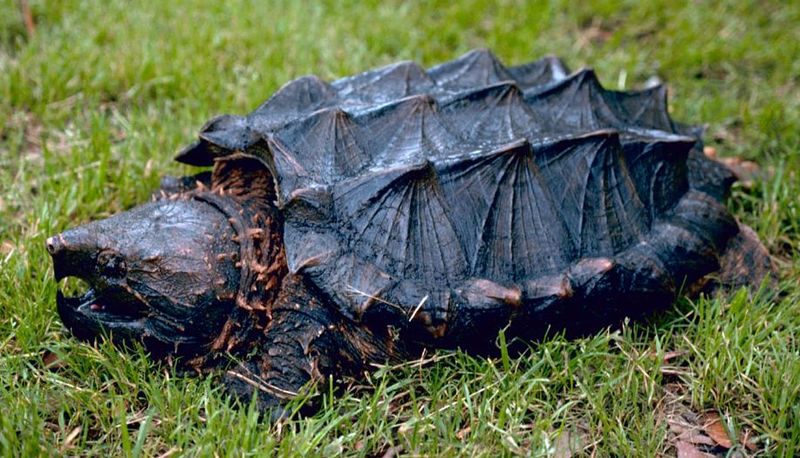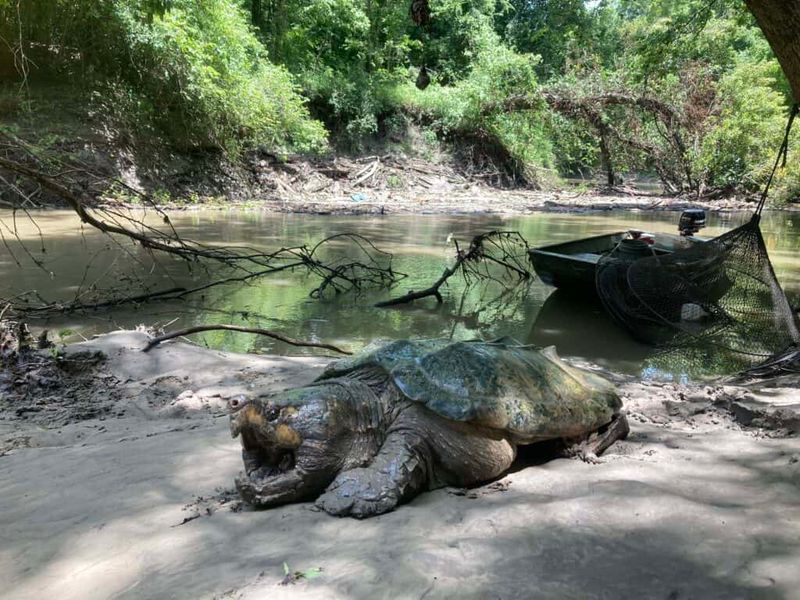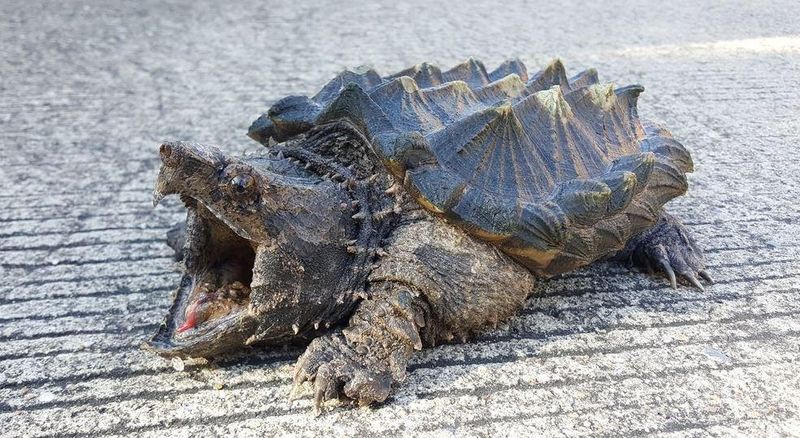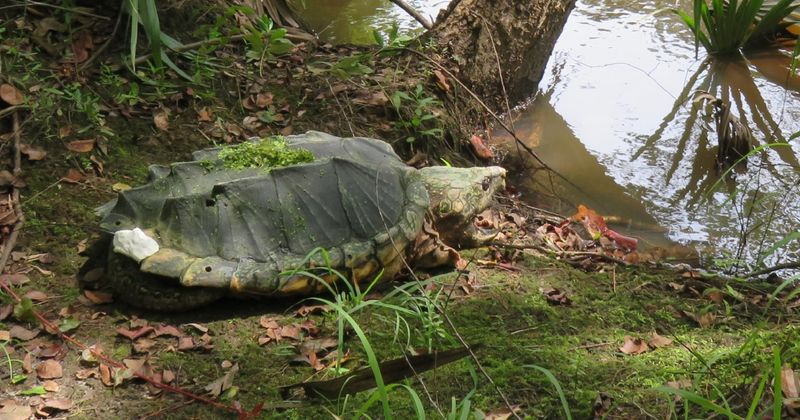In a surprising turn of events, Texas locals were astonished by the sudden appearance of an ultra-rare animal: the alligator snapping turtle. This prehistoric-looking creature, often described as “dinosaur-like,” is known for its immense size and powerful bite capable of snapping human bones. Native to the southern United States, including eastern Texas, the alligator snapping turtle is the largest freshwater turtle in North America, with some individuals weighing over 250 pounds .
Despite its formidable presence, this elusive reptile is rarely seen due to its secretive, bottom-dwelling habits and ability to hold its breath underwater for extended periods. Historically hunted for meat, the alligator snapping turtle has become increasingly scarce, making recent sightings in areas like Houston particularly noteworthy .
The sudden emergence of this ancient predator has sparked both fascination and concern among residents and wildlife experts alike, highlighting the ongoing challenges of biodiversity conservation in the face of urban expansion.
An Ancient Predator Resurfaces

Imagine encountering a creature that seems straight out of the Jurassic era. The alligator snapping turtle is often dubbed a living dinosaur due to its ancient lineage. Its rugged shell and formidable jawline make it a master of disguise in murky waters.
A native of the southern United States, its presence in Texas is both surprising and intriguing. This species is specially adapted to blend into its aquatic surroundings, waiting patiently for prey.
Did you know? It uses a worm-like appendage on its tongue as a lure to attract fish, a unique hunting technique.
Massive Size, Massive Impact

With a shell as tough as armor, the alligator snapping turtle can weigh over 250 pounds. Its massive size is not just for show; it plays a crucial role in its ecosystem. Imagine a turtle so large it could dominate the water around it.
Its bulk allows it to remain stationary, conserving energy while waiting for an unsuspecting meal.
Historically, these turtles were revered by indigenous cultures, who saw them as symbols of strength and endurance. Despite their size, they are now threatened, making sightings rare and special.
A Bite to Remember

Known for its fearsome bite, the alligator snapping turtle’s jaws can crush bone. This power is both awe-inspiring and a reminder of its apex predator status. Imagine witnessing such force in the wild!
Its bite is not only strong but precise, making it a highly efficient hunter. This turtle’s diet includes fish, amphibians, and even other turtles.
Fun fact: The force of its bite is among the strongest of any reptile. Such capabilities have made it both feared and respected in the animal kingdom.
Conservation Challenges

While a formidable creature, the alligator snapping turtle faces significant conservation challenges. Its natural habitats are shrinking due to human encroachment and pollution. Seeing one in Texas is a rare opportunity to appreciate its beauty and resilience.
Conservationists work tirelessly to protect these turtles, raising awareness about their plight. Their efforts aim to preserve the delicate balance between nature and human activity.
Did you know? Conservation programs have successfully bred these turtles in captivity, ensuring their survival for future generations.
A Symbol of Wild Beauty

In the quiet waters of a Texan lake, the alligator snapping turtle embodies the untamed beauty of the wild. Its presence is a reminder of nature’s incredible diversity and resilience. Picture a serene scene, where the turtle glides silently beneath the surface.
This reptile’s rugged appearance and solitary nature make it a symbol of mystery and power. The awe it inspires is matched by the need to protect such rare wildlife.
With each sighting, locals are reminded of the wonders hidden within their own backyards, urging a call to action for preservation.

